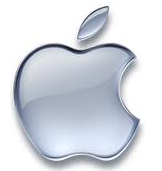The Zero Moment of Truth or ZMOT (“zee-mot”) refers to the online research a prospect undertakes when considering a new purchase. The ZMOT kicks in after one has seen an advertisement for a product a service, yet before the actual purchase is made.
By now, most corporate websites in B2B and B2C sport one or more social media icons on their homepage. Social media nowadays seem to be a ‘must have’, whether as reference to a corporate blog, facebook page or twitter webcare channel. Or are they?
Apple shows how to build an infectious movement around truly people-centric products and solutions. Apple proves that going social does not depend on having the right social media icons pop up online. There are even no ‘share’ buttons on specific Apple landing pages.
I’m convinced Apple does intensively listen to their relevant audiences, physically as well as online and via social media. Not because market research is in the company’s DNA. After all, Steve Jobs was reknown for regularly pushing back on doing market research as customers would not be able to show the way to true breakthrough innovation. But because of Apple’s quest. The quest which has been making great products to enable people to offer as pleasant an experience as possible in their daily life and work.
For a long time Apple has recognized the power of these social elements (in random order):
The need for a technology company to build truly great products, people would want to talk about.
Designed around the user, ‘less is more’ has been Apple’s leitmotiv for a long time. Offering little upfront insights into new products has built to the mystery surrounding product launches, stimulating speculation to go viral. Apple even went as far as censoring certain bloggers for releasing news on the new iPhone prior to formal market introduction.
The human tendency to want to stand out, by belonging to a different tribe. Ever since the famous 1984 Macintosh launch, Apple has successfully appealed to and built up the community of people wanting to express themselves through their choice in technology.
Word of mouth. Lots of word of mouth. Social media is all about the power of people doing the talking. Rather than you doing the advertising. Apple has been a master at both.
Customer psychology. Apple has shown time and time again to understand selling stuff first and foremost has everything to do with understanding people’s needs, wants and issues. And then meeting or resolving them in the best way possible. Whether its using a computer, listening to music, crafting a presentation or shopping, Apple has ensured to make the customer journey as enjoyable as possible. Thereby helping to spread the Apple story like seeds from a pod (the name iPod even was derived from a pod containing 1000 seeds i.e. songs).
Focus and simplicity. By focusing on a limited amount of products and solutions all very easy to use, Apple has successfully fueled the story on the Macintosh, iMac, iPod, iPhone and other Apple products and services.
Great products simply produce great enthusiasm. Apple products have always been engineered with a quest for the highest quality and best user experience. This in turn simply has produced a vast community of superpromoters and hardly any distractors.
A final note. Yes, I’m an Apple fan and yes I have been reading the Steve Jobs biography lately. Both factors inspired me to write this blogpost. I do find it intriguing how a company that has seemingly been run in an autocratic, closed, and ‘non transparent’ fashion can prove to be such a strong and sustainable social movement. To me this shows, there is no ‘one size fits all’-recipe for building social business.
Want to discuss how to make ‘social’ work for your business? Do drop us a note and we’ll usually be in touch within 23 hours.
‘Magnetic marketing’ is both fact- and psyche-based. Instead of being based on the combination of hard facts on the one hand, and true insights into customer behavior on the other, marketing and marketing communications too often are based on assumptions. How to best leverage psychology in B2B marketing?


